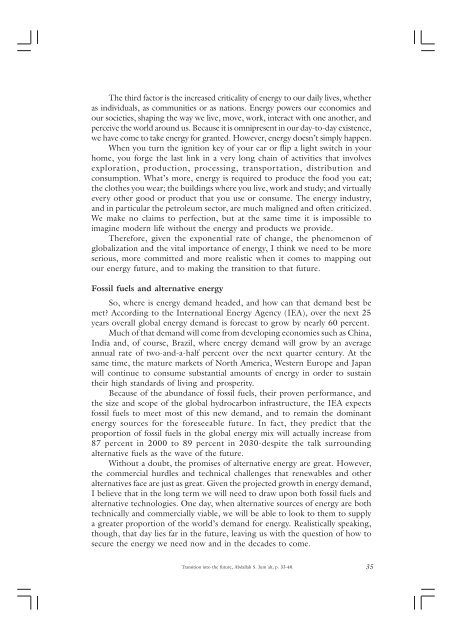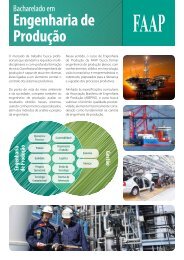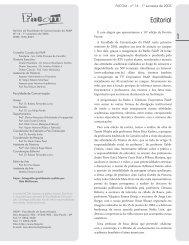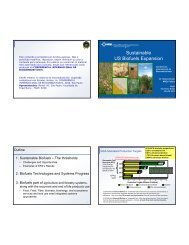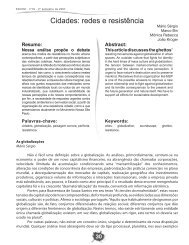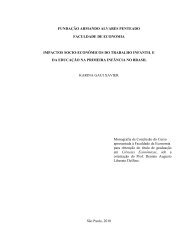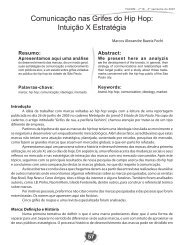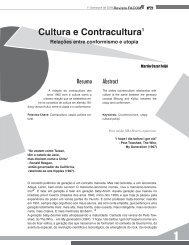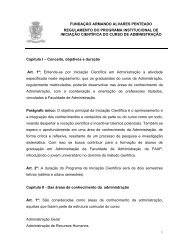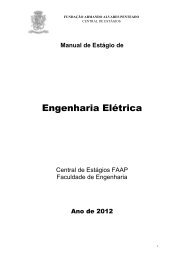Número 8 - Janeiro 2006 - Faap
Número 8 - Janeiro 2006 - Faap
Número 8 - Janeiro 2006 - Faap
You also want an ePaper? Increase the reach of your titles
YUMPU automatically turns print PDFs into web optimized ePapers that Google loves.
The third factor is the increased criticality of energy to our daily lives, whether<br />
as individuals, as communities or as nations. Energy powers our economies and<br />
our societies, shaping the way we live, move, work, interact with one another, and<br />
perceive the world around us. Because it is omnipresent in our day-to-day existence,<br />
we have come to take energy for granted. However, energy doesn’t simply happen.<br />
When you turn the ignition key of your car or flip a light switch in your<br />
home, you forge the last link in a very long chain of activities that involves<br />
exploration, production, processing, transportation, distribution and<br />
consumption. What’s more, energy is required to produce the food you eat;<br />
the clothes you wear; the buildings where you live, work and study; and virtually<br />
every other good or product that you use or consume. The energy industry,<br />
and in particular the petroleum sector, are much maligned and often criticized.<br />
We make no claims to perfection, but at the same time it is impossible to<br />
imagine modern life without the energy and products we provide.<br />
Therefore, given the exponential rate of change, the phenomenon of<br />
globalization and the vital importance of energy, I think we need to be more<br />
serious, more committed and more realistic when it comes to mapping out<br />
our energy future, and to making the transition to that future.<br />
Fossil fuels and alternative energy<br />
So, where is energy demand headed, and how can that demand best be<br />
met? According to the International Energy Agency (IEA), over the next 25<br />
years overall global energy demand is forecast to grow by nearly 60 percent.<br />
Much of that demand will come from developing economies such as China,<br />
India and, of course, Brazil, where energy demand will grow by an average<br />
annual rate of two-and-a-half percent over the next quarter century. At the<br />
same time, the mature markets of North America, Western Europe and Japan<br />
will continue to consume substantial amounts of energy in order to sustain<br />
their high standards of living and prosperity.<br />
Because of the abundance of fossil fuels, their proven performance, and<br />
the size and scope of the global hydrocarbon infrastructure, the IEA expects<br />
fossil fuels to meet most of this new demand, and to remain the dominant<br />
energy sources for the foreseeable future. In fact, they predict that the<br />
proportion of fossil fuels in the global energy mix will actually increase from<br />
87 percent in 2000 to 89 percent in 2030-despite the talk surrounding<br />
alternative fuels as the wave of the future.<br />
Without a doubt, the promises of alternative energy are great. However,<br />
the commercial hurdles and technical challenges that renewables and other<br />
alternatives face are just as great. Given the projected growth in energy demand,<br />
I believe that in the long term we will need to draw upon both fossil fuels and<br />
alternative technologies. One day, when alternative sources of energy are both<br />
technically and commercially viable, we will be able to look to them to supply<br />
a greater proportion of the world’s demand for energy. Realistically speaking,<br />
though, that day lies far in the future, leaving us with the question of how to<br />
secure the energy we need now and in the decades to come.<br />
Transition into the future, Abdallah S. Jum´ah, p. 33-40.<br />
35


